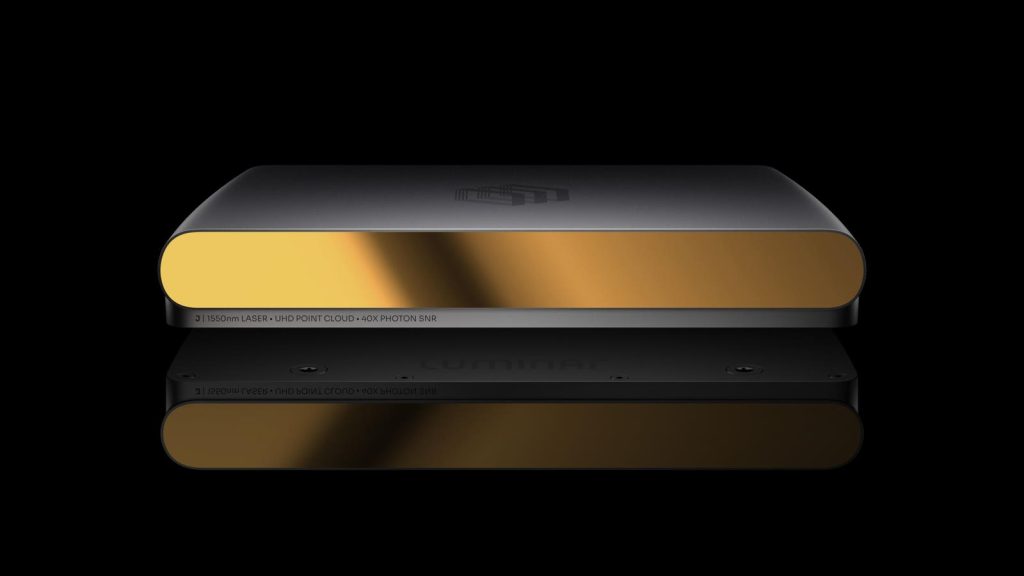As Orlando, Florida-based Luminar Technologies embarks on its 2024 investor day, it is releasing a bunch of news. This includes the announcement of its next-generation sensor and claimed safety benefits based on testing by its reinsurance partner, Swiss Re. The most important near term news though is that volume production of the Luminar Iris lidar has begun for its first global customer, Volvo.
Production of the Iris for Volvo is crucially important for Luminar as it means that the company will finally start to generate some meaningful revenues although it is likely still quite a way from profitability. Luminar began supplying the Iris sensor to SAIC for its R7 EV in 2022, but only a bit over 10,000 units of that model have sold and it’s not clear how many of those are equipped with lidar and it’s only offered in China..
The new Volvo EX90 which is based on its new SPA2 platform begins production in the coming weeks will come standard with the Iris sensor mounted above the windshield. Later in the year, the Polestar 2 which shares that platform will also offer lidar and other upcoming Volvo models are expected to use it as well. All of these will be manufactured in multiple regions and sold globally.
In 2025, Mercedes-Benz will begin launching its next-generation of electric vehicles based on its new MMA platform and they will also use an updated version of the Iris sensor. Luminar claims to have a $4 billion order book and getting these programs launched successfully will be key making the company viable.
At the 2023 Luminar day in Orlando, the company emphasized its intention to put more emphasis on the Chinese market, especially with non-Chinese OEMs. However, that could prove challenging. While non-Chinese brands used to be favored in that market, the improvement in domestic brands, especially with the EV transition has seen them shift from holding roughly 40% market share to more than 60% in recent years and the trend shows no indication of slowing.
More challenging for Luminar is that most of the Chinese automotive brands are incorporating lidar into new models, but they are selecting Chinese suppliers, particularly Hesai and Robosense. Both of those companies are offering lidar sensors at $500 and below that are not necessarily as long range as Luminar sensors, but they are still well suited to the lower speeds typically driven in China. It’s estimated that about 2 million vehicles sold in China this year will be equipped with lidar.
To combat this, Luminar has also announced its next-generation sensor, called Halo. Luminar gave the first indications of this new sensor at its 2023 investor day and now has more details. The Halo sensor is based on several new developments from Luminar Semiconductor (also announced last year) that are claimed to deliver 4x better performance, 3x reduction in size, double the thermal efficiency and half the cost and power consumption.
The new sensor aims to be less than 1-inch tall and consume only 10 watts of power. This should enable both rooftop installations like the Iris as well as behind the windshield installations for an even cleaner look and less risk of damage. While prices for most lidars aren’t publicly quoted, it’s estimated that Iris costs about $1,000 (itself a huge reduction from the $80,000 price of early Velodyne lidar) which should put the Halo sensor at about $500. That would make it competitive with the similarly priced Innoviz2 sensor that VW Group has selected for its next-generation vehicles as well as the highest performance sensors from Hesai and Robosense.
Luminar’s long-standing goal has been to democratize lidar and use it to improve safety on as many vehicles as possible. Getting the cost to $500 and below should go a long way to achieving that goal. The Halo sensor is targeted at 2026 production.
As part of its efforts to stand behind the benefits of adding lidar to improve active safety systems, Luminar has been demonstrating the improved capability of vehicles equipped with an Iris sensor for automatic emergency braking and collision avoidance against vehicles equipped with cameras only and camera/radar combinations. Last year the company announced its intention to offer auto insurance to owners of lidar equipped vehicles as a way of standing behind those benefits. The insurance program will be in partnership with reinsurer Swiss Re.
Over the past year, Swiss Re has done testing of a number of vehicles in a variety of scenarios to try to quantify the benefits of adding lidar. The insurer ran tests against leading vehicles in the market with level 2 driver assistance (systems that can provide steering, braking and acceleration assistance). When testing the baseline vehicle with and without the Luminar lidar, that vehicle was able to avoid up to 25% more collisions and decrease collision impact by 29% (through detecting earlier and braking). Against the top two performing competitive vehicles, the results were even better with up to 27% fewer collisions and 40% lower impact force. Swiss Re hasn’t identified which vehicle or ADAS it tested.
Testing and validating assisted and automated driving systems in all of the scenarios that can occur in the real world is extremely time consuming and costly and most of the situations that occur tend not to be easily reproducible. That makes simulation a crucial part of validating any changes in the system. To make that easier, Luminar is partnering with Applied Intuition to develop a hardware and software based simulation capability. As part of the program, the two companies will develop physics based models of Luminar sensors that can be integrated into simulation platforms with virtual environments where parameters such as weather, road conditions and lighting can be infinitely varied.
Finally, Luminar is expanding its manufacturing partnership with TPK to extend its manufacturing footprint to supply lidar sensors. TPK already has a factory in Asia producing Luminar components and systems and the expansion is expected to help bring down Luminar’s costs.
Read the full article here





